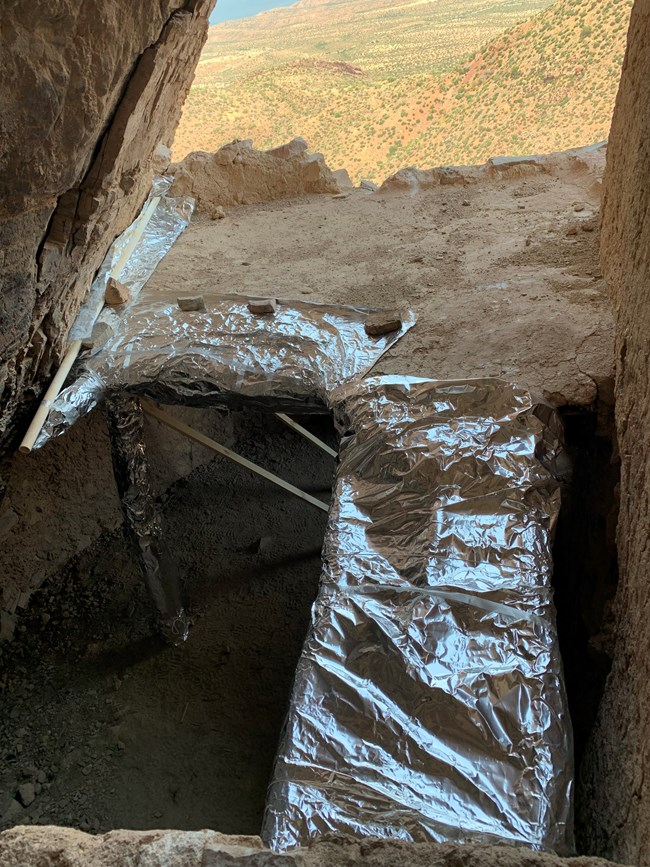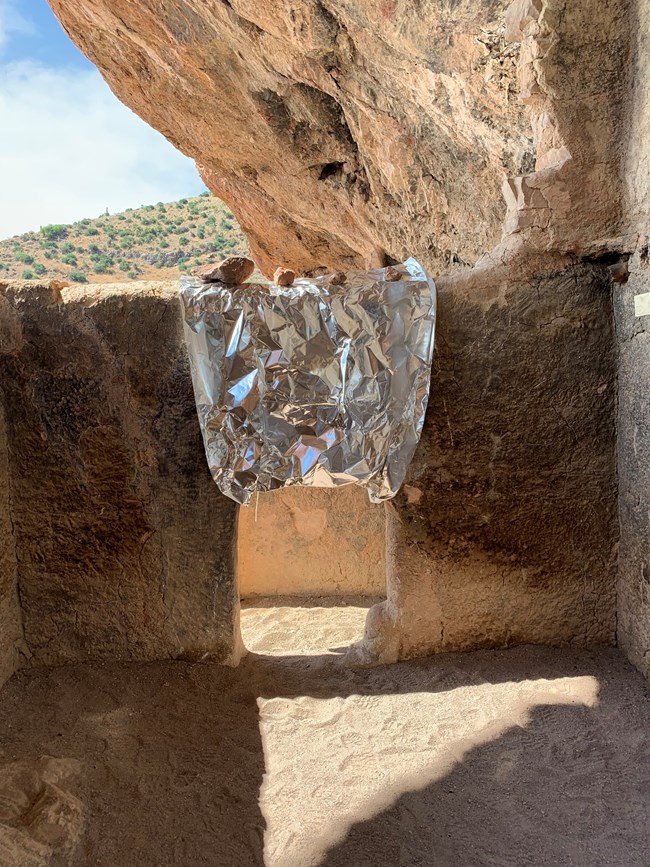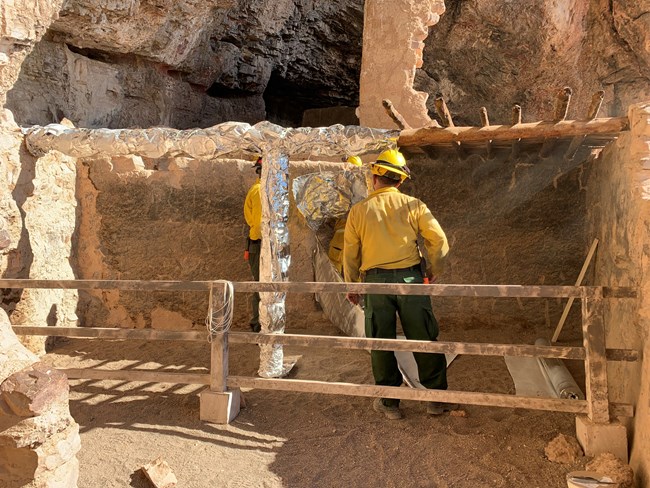
(NPS Photo)
The two Salado cliff dwellings found at Tonto National Monument display the connection between the Salado and their environment. They constructed the dwellings over 700 years ago using local wood, including ponderosa pine, juniper, saguaro ribs, and many other southwestern species. In the summer of 2019, the impending wild Woodbury Fire in the nearby Superstition Wilderness threatened the preserved wood found in these ancient structures. Protecting these cliff dwellings from the fire was a major priority for Tonto National Monument. The Integrated Resources staff decided to cover the cliff dwellings in a fire resistant aluminized structure wrap to shield the prehistoric wood, and preserve the dwellings as a whole. On June 19 and 20, 2019, Tonto National Monument staff led a crew on a mission to wrap the cliff dwellings. This crew included Tonto National Forest Fire staff, Capstone Fire & Safety Management, Casa Grande Fire Department, and Arizona Fire and Medical Authority. So, how do you wrap a cliff dwelling without negatively impacting 700+ year old wood? Preservation of the dwellings started by removing nearby vegetation and other wooden fuels, and then attaching the fire resistant wrap without stapling directing into the prehistoric wood. Fire was introduced into the park on June 21, 2019, and due to the efforts of the fire crews and resource staff, both cliff dwellings were unharmed. Once the fire was no longer a threat, the wrap was carefully removed. This historic achievement for Tonto National Monument was the first time in park history that the dwellings were protected from wildfire. With teamwork, problem solving, and a passion for preservation, the cliff dwellings remain unscathed. The crew who wrapped the cliff dwelling truly exemplified the mission of the National Park Service by preserving the nation’s treasures for future generations. How to Wrap a Cliff Dwelling 101
(NPS Photo/M.Monahan) 
(NPS Photo/M.Monahan) 
(NPS Photo/M.Monahan) 
(NPS Photo/M.Monahan)
Written by National Park Service employees Stephanie Mack and Macie Monahan
|
Last updated: September 28, 2019
